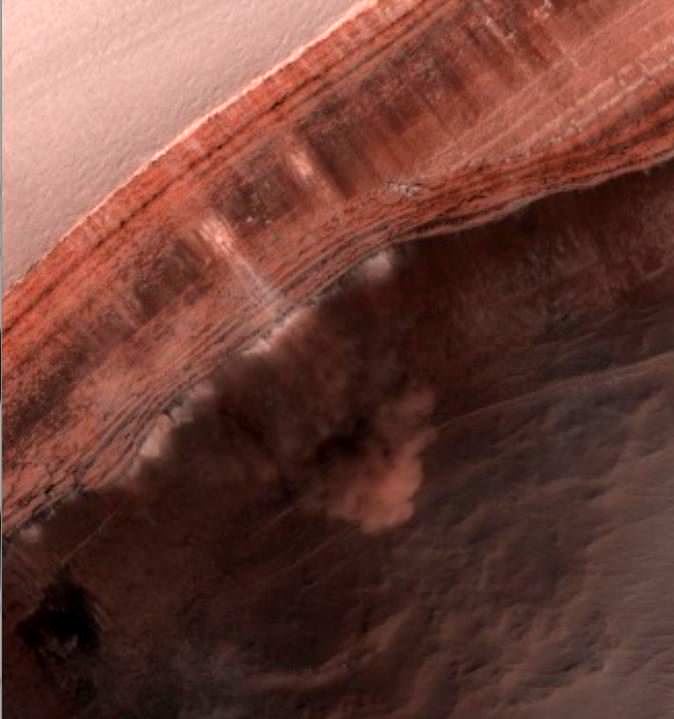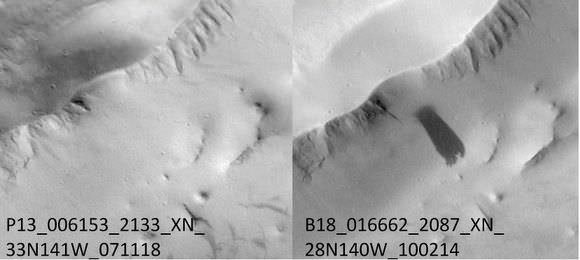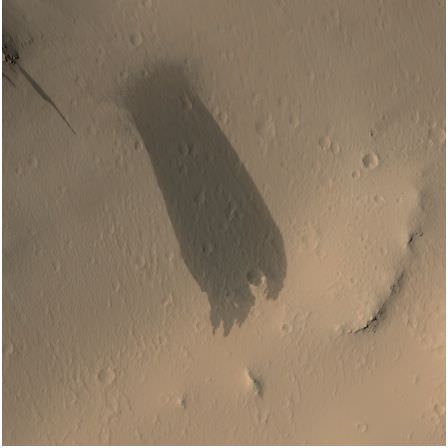[/caption]
Its avalanche season on Mars! And once again the HiRISE camera on the Mars Reconnaissance Orbiter has captured an avalanche taking place on a steep cliff or scarp in Mars’ north polar region. Back in 2008, the HiRISE team created quite a sensation when it captured an avalanche in action on Mars. The high resolution camera did it again in 2010 when springtime arrived once more. Now, another Mars year later, the team has been monitoring specific areas, looking for evidence of avalanches and they hit pay dirt – literally. This image of an avalanche taking place is from a large image “strip” from HiRISE taken in the extreme northern latitude of Mars, about 85 degrees north.
Dust, fine-grained ice and possibly large blocks of either regolith or rocks has detached from a steep, towering cliff and cascaded below. The HiRISE team say the occurrence of avalanches is spectacularly revealed by the accompanying clouds of fine material that continue to settle out of the air.
The avalanches are a result of carbon-dioxide frost that clings to the scarp in the darkness of winter, and when sunlight hits them in the spring they loosen up and fall.
These events happen mostly in the middle of spring, roughly equivalent to April to early May on Earth. And it seems this is a regular spring process at Mars’ north pole that may be expected every year.
This image is part of the latest PDS release from HiRISE.
Hat tip: Jason Major and Discovery Space




